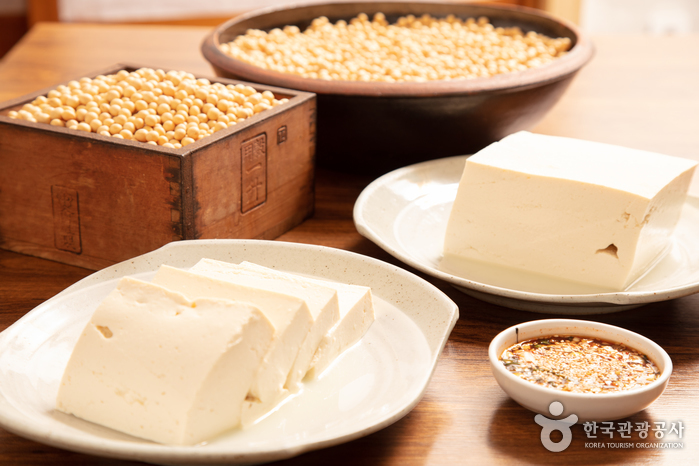List - 2001 Outlet Junggye Branch [Tax Refund Shop] (리스트 2001아울렛 중계)
7.1Km 2024-06-27
46, Dongil-ro 204ga-gil, Nowon-gu, Seoul
-
Roem - 2001 Outlet Junggye Branch [Tax Refund Shop] (로엠 2001아울렛 중계)
7.1Km 2024-06-27
46, Dongil-ro 204ga-gil, Nowon-gu, Seoul
-
Michaa - 2001 Outlet Junggye Branch [Tax Refund Shop] (미샤 2001아울렛 중계)
7.1Km 2024-06-27
46, Dongil-ro 204ga-gil, Nowon-gu, Seoul
-
Valencia - 2001 Outlet Junggye Branch [Tax Refund Shop] (발렌시아 2001아울렛 중계)
7.1Km 2024-06-27
46, Dongil-ro 204ga-gil, Nowon-gu, Seoul
-
Flamingo - 2001 Outlet Junggye Branch [Tax Refund Shop] (후라밍고 2001아울렛 중계)
7.1Km 2024-06-27
46, Dongil-ro 204ga-gil, Nowon-gu, Seoul
-
Hwanggeum Kongbat (황금콩밭)
7.1Km 2023-10-10
9 Mapo-daero 16-gil, Mapo-gu, Seoul
Hwanggeum Kongbat specializes in bean curd, using 100% Korean-grown soybeans and salt to make their bean curd fresh daily. The restaurant is famous for their method of making a bean curd that is smooth and maintains the nutty yet sweet flavor of the soybeans.
Olive Young - Aeogae Station Branch [Tax Refund Shop] (올리브영 애오개역)
7.1Km 2024-04-16
#107, and #108, 201, Mapo-daero, Mapo-gu, Seoul
-
CheongKwanJang - Apgujeong Branch [Tax Refund Shop] (정관장 압구정)
7.1Km 2024-04-18
#103, 306, Apgujeong-ro, Gangnam-gu, Seoul
-
Seoul Hyochang Park (서울 효창공원)
7.1Km 2024-07-09
177-18 Hyochangwon-ro, Yongsan-gu, Seoul
+82-2-2199-7608
Hyochang Park covers 122,245 square meters spanning across Hyochang-dong and Cheongpa 2-dong. It is a historic landmark that once contained several royal tombs, and was known at that time as Hyochangwon. The cemeteries that were originally located in Hyochangwon belonged to Crown Prince Munhyo, King Jeongjo’s first son who died at the age of five; Royal Noble Consort Uibin of the Seong Clan, King Jeongjo’s royal concubine and Crown Prince Munhyo’s mother; Royal Noble Consort Sugui of the Park Clan, King Sunjo’s royal concubine; and her daughter Princess Yeongon. The royal tombs were moved to Seooreung Tombs in the waning months of the Japanese colonial period. The Japanese empire began the development of Hyochangwon into a park in 1924, and the Japanese governor-general officially assigned the site as a park in 1940.
Presently, several of Korea’s greatest leaders are buried in Hyochang Park. The remains mostly belong to independence activists including Yoon Bong-gil, Lee Bong-chang, and Baek Jeong-gi, whose graves are collectively known as Samuisa Tomb. A statue of Lee Bong-chang has been built in the graveyard. Among the other patriotic martyrs who are interred in the park are Kim Gu and some of the key figures of the provisional government such as Lee Dong-nyeong, Cha I-seok, and Cho Seong-hwan. An ancestral shrine named Uiyeolsa has been built along the main gate and holds the portraits of the deceased independence activists.
Columbia - Konkuk Univ. Branch [Tax Refund Shop] (컬럼비아 건대)
7.1Km 2024-04-16
1F, 59, Dongil-ro 20-gil, Gwangjin-gu, Seoul
-
![List - 2001 Outlet Junggye Branch [Tax Refund Shop] (리스트 2001아울렛 중계)](http://tong.visitkorea.or.kr/cms/resource/50/3314850_image2_1.jpg)
![Roem - 2001 Outlet Junggye Branch [Tax Refund Shop] (로엠 2001아울렛 중계)](http://tong.visitkorea.or.kr/cms/resource/21/3314821_image2_1.jpg)
![Michaa - 2001 Outlet Junggye Branch [Tax Refund Shop] (미샤 2001아울렛 중계)](http://tong.visitkorea.or.kr/cms/resource/07/3314307_image2_1.jpg)
![Valencia - 2001 Outlet Junggye Branch [Tax Refund Shop] (발렌시아 2001아울렛 중계)](http://tong.visitkorea.or.kr/cms/resource/01/3314001_image2_1.jpg)
![Flamingo - 2001 Outlet Junggye Branch [Tax Refund Shop] (후라밍고 2001아울렛 중계)](http://tong.visitkorea.or.kr/cms/resource/92/3314592_image2_1.jpg)

![Olive Young - Aeogae Station Branch [Tax Refund Shop] (올리브영 애오개역)](http://tong.visitkorea.or.kr/cms/resource/85/2888685_image2_1.jpg)
![CheongKwanJang - Apgujeong Branch [Tax Refund Shop] (정관장 압구정)](http://tong.visitkorea.or.kr/cms/resource/21/2879521_image2_1.jpg)

![Columbia - Konkuk Univ. Branch [Tax Refund Shop] (컬럼비아 건대)](http://tong.visitkorea.or.kr/cms/resource/52/2878852_image2_1.jpg)
 English
English
 한국어
한국어 日本語
日本語 中文(简体)
中文(简体) Deutsch
Deutsch Français
Français Español
Español Русский
Русский